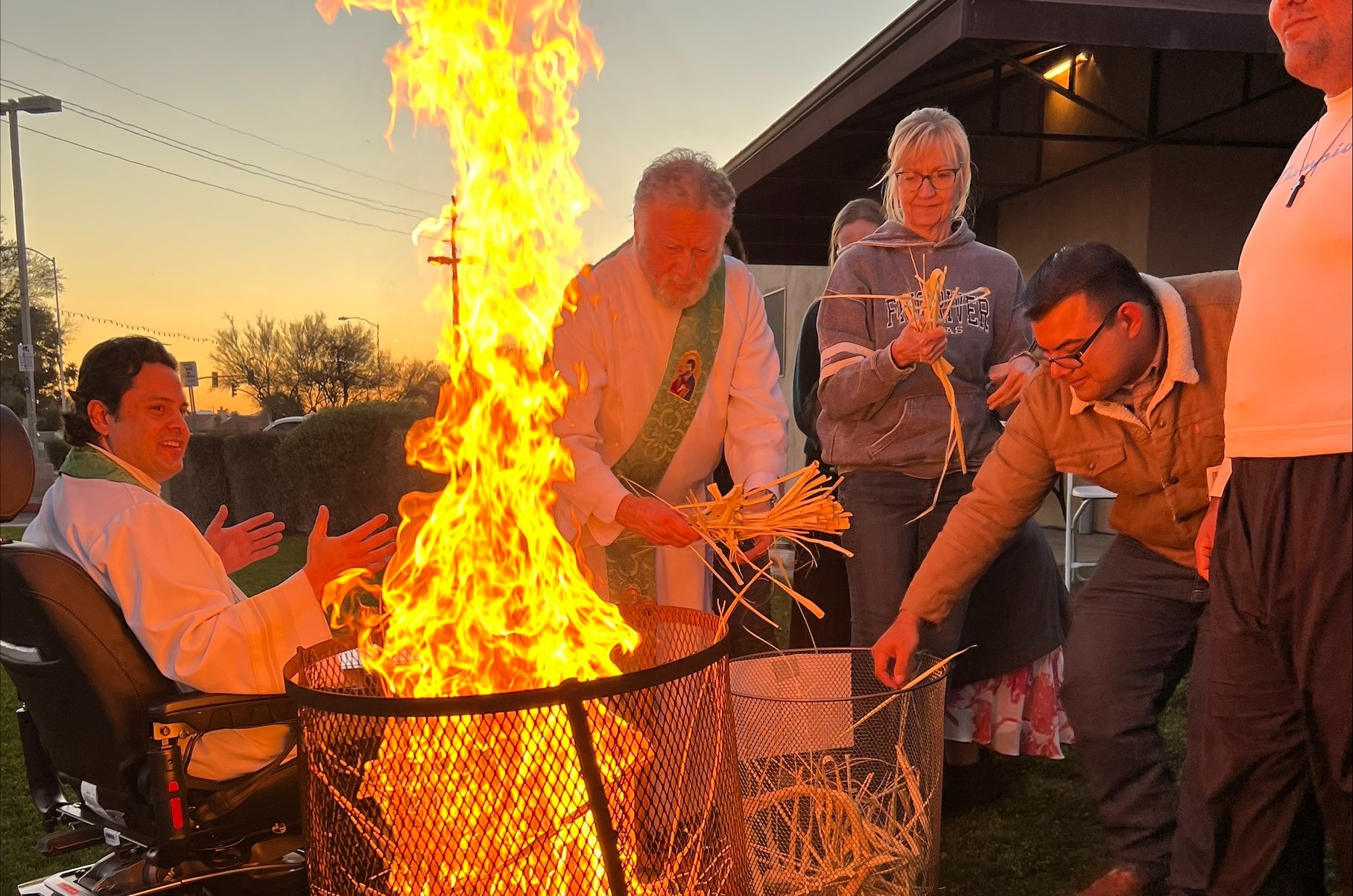As we kick-off our Lenten season on Ash Wednesday, February 14, have you ever wondered where the ashes used to mark foreheads come from?
Alyssa Yingling, of the Office of Worship for the Diocese of Phoenix, said that most parishes purchase them from religious goods stores. There are a few parishes in the diocese, however, that produce ashes from burning the blessed palms from the previous year’s Palm Sunday liturgy. If that’s done, Yingling said, it’s helpful to also throw into the fire cotton balls that have been used with the sacred oil employed in the sacrament of anointing of the sick.
“It helps dispose of those in a respectful way, but it also adds a little bit of oil to the ashes which allows them to stick together better,” Yingling said. That blend means a better application of the ashes on Ash Wednesday.
St. Timothy Catholic Church in Mesa burned its palms after the teen Mass this past Sunday evening in the parish amphitheater. The parish is one of several in the diocese that produces its own ashes with this annual tradition.
On Ash Wednesday, Catholics around the globe will have blessed ashes applied to their foreheads as a sign of repentance. This practice, taken from the ancient Jewish practice of penance and fasting, is one of the most beloved liturgical practices of the year. As ashes are given, the priest or other minister says, “Remember that you are dust, and to dust you shall return.” Alternatively, the words are, “Repent and believe in the Gospel.”
Picture by Lauren Powers






